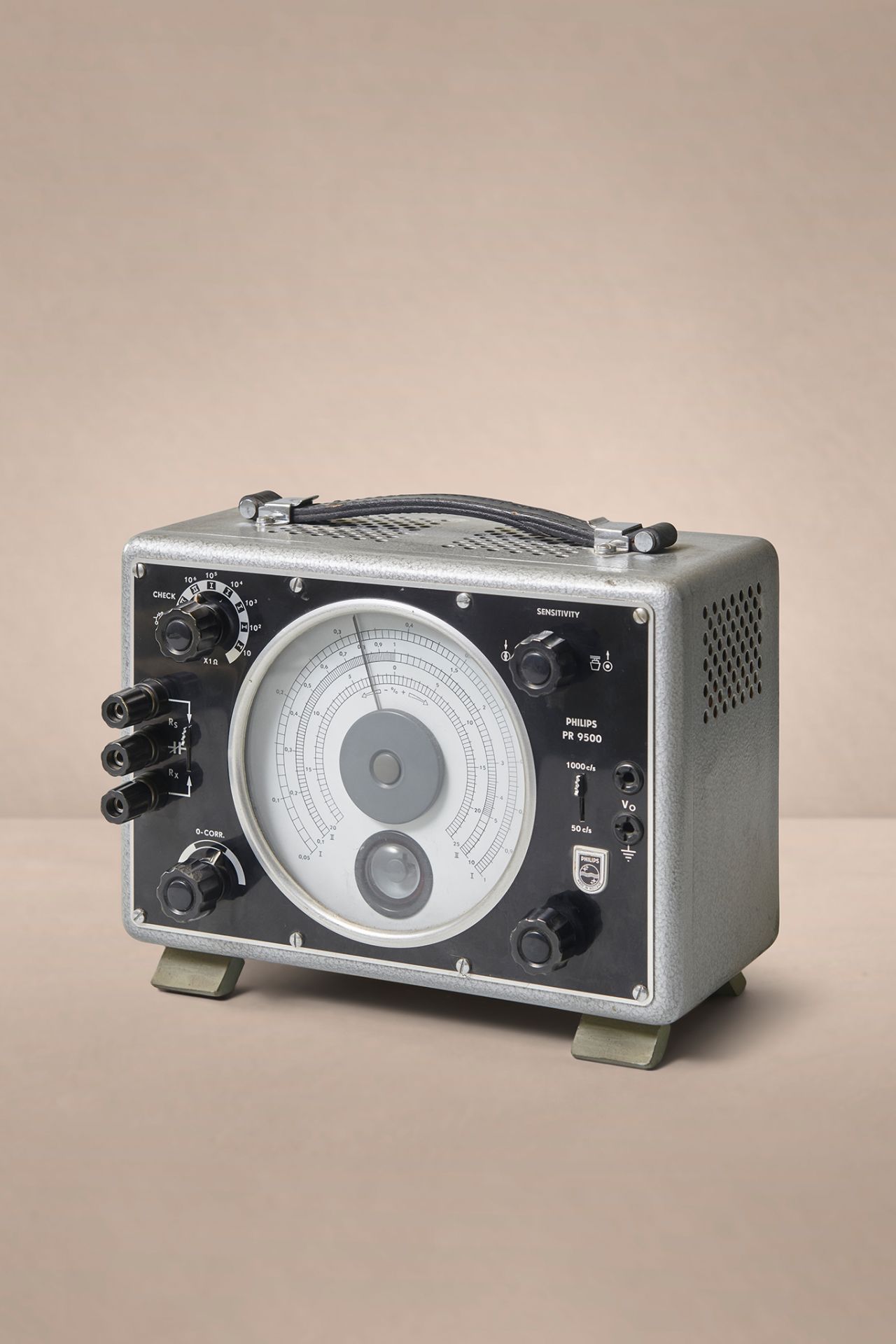INFO
Conductometer PR 9500
Philips 1950-1960
metal, glass, electrical wire
h 19 x w 25 x d 15 cm

The Taste of Water
This is a conductometer, also known as a conductivity meter. It is used to measure the electrical conductivity of liquids, allowing one to determine the extent to which (visually) clear water is contaminated with salts and metal ions. The first conductometers appeared on the market in the late 1950s, primarily finding use in laboratories, industrial boiler houses, inspection services, power plants, and water utility companies.
In a water test, the conductivity of water with a known concentration of dissolved substance (salt) is measured at a specific temperature. This calibration measurement provides a reference for an unknown water sample, where a conductivity measurement indicates the degree of contamination: the higher the conductivity, the greater the concentration of dissolved salts, and thus, the less pure the water.
Clean water
This Philips model, the 9500, is a professional laboratory conductometer that was used by Heineken in the 1950s. Breweries have always been concerned with clean (ground)water, an essential and determining ingredient in their product. Water from deep layers has the least contamination. Gerard Adriaan Heineken specifically chose the location of his second brewery in Rotterdam due to the presence of a well, a natural groundwater source. In Amsterdam, he had access to filtered water from the Waterleidingduinen (Water Supply Dunes, near Haarlem).
Taste
As beer consists of about 90% water, the taste of a beer can vary depending on the origin of the water. This varies at each brewery worldwide, from groundwater and river, reservoir, or seawater to public or private third-party drinking water. This can even be an advantage: West Flemish breweries near the North Sea credit the special taste of their beer to the salt-rich groundwater. The calcium content, and water hardness, also have a significant effect on the taste of beer. Soft water is recommended for brewing pilsner, while hard water is better for stout and bitter beers.
Modern Electrical Conductivity (EC) meters are digital; some even have sensors that can be connected to a smartphone. At Heineken, they are still indispensable, both in the continuous control and adjustment of the quality of (drinking) water for the brewing process and in the purification process afterward, with the goal of ensuring that wastewater leaves the brewery purified. Currently, this is the case for about 94% of the over 120 Heineken breweries in 70 countries.